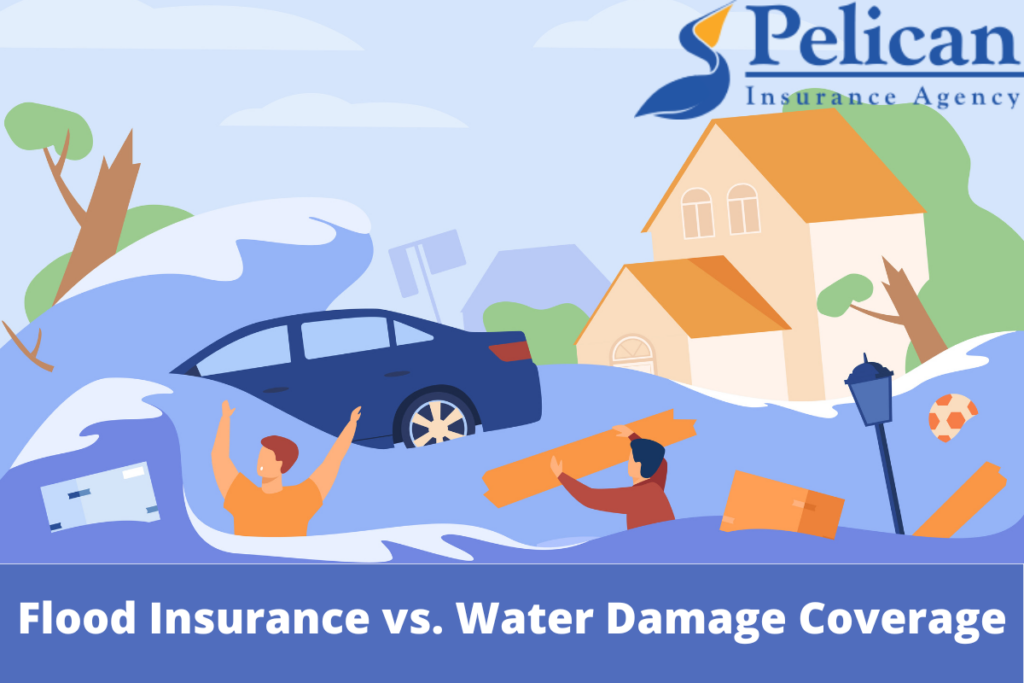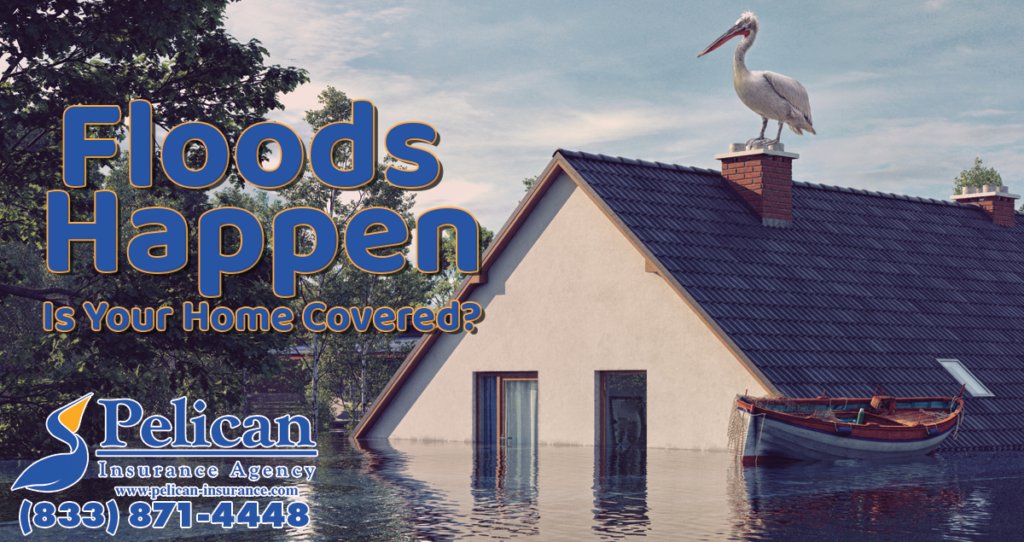Flood Insurance vs. Water Damage Coverage: Understanding the Differences

Water damage can be a homeowner’s nightmare, wreaking havoc on property and finances. Water-related incidents can lead to significant repair costs and emotional distress, whether from a burst pipe, a heavy rainstorm, or a full-blown flood. That’s where insurance comes in. However, understanding the distinctions between flood insurance vs. water damage coverage is crucial for ensuring adequate protection. In this blog, we will compare two insurance products to help you protect your property.

What is Flood Insurance?
Coverage for losses due to floods is the exclusive purview of flood insurance. Unlike standard homeowners insurance, which typically excludes flood-related damages, flood insurance provides financial protection for flood-related losses. It’s important to note that flood insurance is usually purchased separately from homeowners insurance.
Flood insurance coverage typically includes damage to the structure of the home, as well as its contents. This can encompass everything from structural damage to flooring, walls, and electrical systems to damage to personal belongings such as furniture and appliances. However, it’s essential to review policy details carefully, as flood insurance may not cover certain items or types of damage.
Exploring Water Damage Coverage
Standard homeowner’s insurance policies typically contain water damage coverage. It protects against water-related incidents like burst pipes, plumbing leaks, and accidental overflows. Unlike flood insurance specific to flooding, water damage coverage can address a broader range of water-related issues within the home.
Water damage coverage typically covers repairs to the home’s structure and the replacement or repair of damaged personal property. Like flood insurance, your policy may have exclusions and limitations, so read it carefully.
Key Differences Between Flood Insurance and Water Damage Coverage
The primary differences between flood insurance and water damage coverage lie in their scope of coverage, the causes of damage they address, geographical considerations, and cost factors. While flood insurance explicitly covers damage caused by flooding, water damage coverage encompasses a broader range of water-related incidents.
Additionally, flood insurance is often required for homeowners in designated flood zones. At the same time, water damage coverage may be included or available as an add-on to homeowners insurance policies.
Factors to Consider When Choosing Insurance Coverage
When choosing insurance coverage, several essential factors must be considered to ensure you have the right level of protection for your property and belongings. Here are some key factors to keep in mind:
Location
The location of your home influences the type and level of insurance coverage you require. Assume you reside in an area susceptible to natural disasters like floods, earthquakes, storms, or wildfires. In that case, you may need specialized coverage beyond standard homeowners insurance.
Risk Assessment
Conduct a thorough property risk assessment to pinpoint potential dangers and vulnerabilities. Consider your home’s closeness to bodies of water, history of previous damage, local climate trends, and its age and condition. With the help of this evaluation, you can zero in on the coverage options that will best address these threats.
Coverage Options
Understand the various insurance coverage available to you, such as homeowner’s insurance, flood insurance, earthquake insurance, and supplementary riders or endorsements. Assess your specific needs and determine which types of coverage are necessary to protect your property and belongings adequately.
Policy Limits and Deductibles
Review each insurance policy’s policy limits and deductibles carefully. Your insurer’s maximum payment for covered losses is your policy limit. At the same time, deductibles are the out-of-pocket costs you must pay before your insurance coverage begins. Ensure the policy limits and deductibles align with your budget and risk tolerance.
Exclusions and Limitations
Familiarize yourself with any exclusions and limitations outlined in your insurance policies. Exclusions are specific events or circumstances not covered by your insurance policy. At the same time, limitations may restrict coverage for certain types of property or damages. Be aware of these limitations to avoid gaps in coverage.
Cost Considerations
Think about how much coverage you get for the money you pay for insurance. While finding affordable insurance options is essential, it’s equally important not to sacrifice necessary coverage to save money. Find the optimal balance between cost and coverage by comparing quotes from various insurers.
Policy Features and Benefits
Compare the features and benefits of several insurance policies, including those that protect you from personal liability, replacement cost coverage, and additional living expenditures. These features can provide valuable financial protection and peace of mind during a covered loss.
Conclusion
Homeowners who want to safeguard their houses from water-related threats must understand the distinctions between water damage coverage and flood insurance. Whether you’re a homeowner assessing your insurance needs or a renter looking to protect your belongings, reviewing your options carefully and ensuring you have the right level of coverage is critical.
At Pelican Insurance Agency, we specialize in providing personalized guidance tailored to your unique circumstances. Let our experienced agents help you navigate the complexities of insurance, find the perfect policy to meet your needs, and provide peace of mind knowing you’re adequately protected. Contact us today to learn more and get started on securing the protection you deserve.